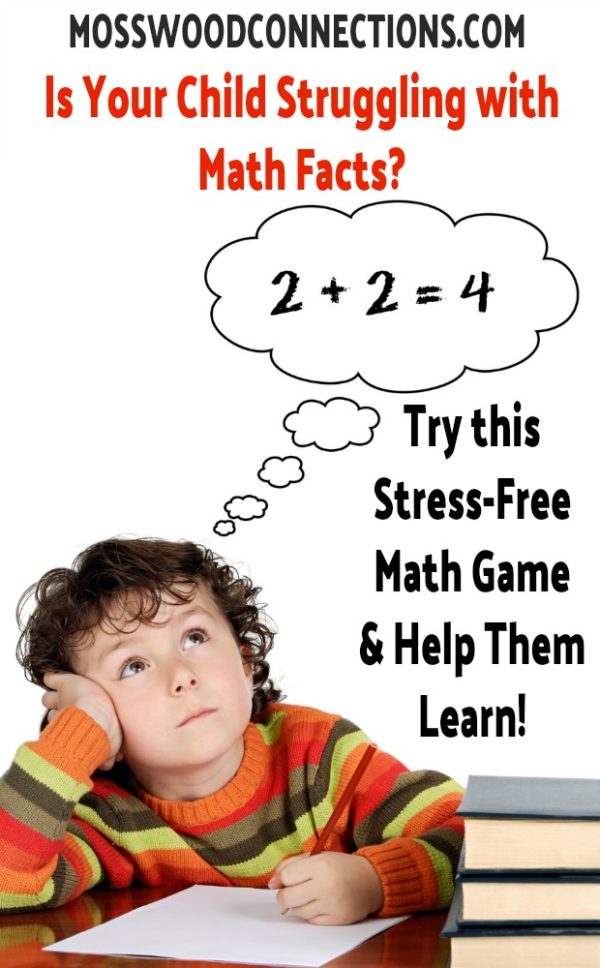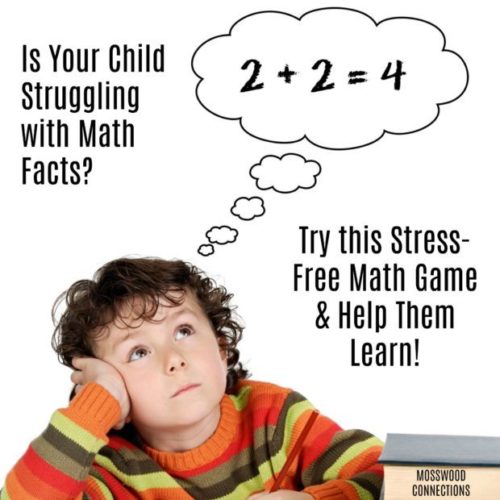Get it, Got it, Good!
Education
An Easy Low-Stress Math Facts Activity
Many children struggle to learn math facts. I can remember so many hours practicing math facts with my daughter, who would promptly forget what she had just learned. As I watched her frustration increase and her self-esteem decrease I knew that we needed to find another way.
This page contains affiliate links. Please visit our disclosure page for more information.

Get it, Got it, Good! An Easy Low-Stress Math Facts Activity
This math facts activity takes a lot of the stress away and actually works. I have used it to teach math facts with many children over the years. Their ability to retain math facts absolutely improved. However, when it came to timed math tests my students still struggled with answering the math problems quickly, as putting pen to paper can add an extra layer of difficulty for some kids. So I added in writing the answers to help the kids begin to be able to not only quickly say the answers but also be able to quickly write the answers.
Target Skills for this Low-Stress Math Facts Activity:
- Math facts
- Faster response time (processing speed)
Materials for this Low-Stress Math Facts Activity:
- Flashcards (if your student helps to make their own flashcards this may also help them remember the math facts. Make sure that the answer is on the back of the card.)
Instructions for this Low-Stress Math Facts Activity:
- Make a set of 10 boxes for the student to write the answers in.
- Explain to the student that they can only win in this game. If they answer the problem then it goes into the done pile, if they get stumped with a math problem it goes in the practice pile. This takes the stress off of the traditional way of holding up the card while the poor kid squirms in their chair as they try to reach in their memory for the answer. They have “won” the game when they have written the answers to 10 math facts. Take 10-15 flashcards. Go over the cards with the student 3 times. You are reviewing the facts not trying to answer them.
- Hold a flashcard on the left side of the student (your right when you are sitting facing the student) and pass the card from their right to your left. This should take about 6 seconds or the time it takes to say “Get it, got it? Good!” in your head. Passing the card from left to right serves a few purposes, it works on visual tracking and gives a time limit for answering the question.
- If the student writes the correct answer by the time it has passed in front of them then the card goes into the done pile, if not, it goes into the practice pile. I’m big on praise but I have found that sometimes more auditory information just stresses the students so I am usually pretty quiet during this exercise. When the student has filled in the 10 boxes the game is done.
- If the 10 boxes are not filled in by the time you have cycled through the set of 15 cards, try reusing the cards that made it to the practice pile. If that is still too hard then reduce the number of boxes to 5 and build up as the students succeed.
- How to deal with errors? Let’s say that the student has filled in the 10 boxes but 1 or more answers are incorrect, you can handle this in a few different ways. The way that you choose to handle it depends on what you think is the best way to motivate that particular child. Some children like a challenge while others benefit from a softer approach. You can start with 15 boxes and stop the game when you see that there are 10 correct answers. You can have the child score themselves and keep a chart of their scores, ask them to challenge themselves to improve their score the next time. You can give them a chance to correct their answers. The facts that they answered incorrectly should go into the practice pile
Adapting the difficulty levels:
- Start with sequential problems: 1+2, 1+3, etc.
- Use Math sets: (Equations that add up to the same number) 1+4, 4+1, 2+3, 3+2, 5+0, etc.
- Mix the problems but focus on only one math function such as addition.
- Use math families, ie: 1+2, 2+1, 3-1, 3-2
- Use addition/subtraction flashcards or multiplication/division flashcards.
- Completely vary the functions and facts.

Alternative Ways to Play Math Facts Game:
- Put the equations on train cars. Set up a train track. Have the student answer before the train gets to the end of the track.
- Hold the flashcard up as you walk across a room. The student has to grab it while saying the correct answer before you reach the other side of the room.
Kids will find this math facts activity an enjoyable way to learn!
More Ways to Practice Math Facts:
You can also practice math facts with online games. Check out Math Playground for some fun free math games. If you and the kids like card games there are many fun ways to learn math facts with playing cards. Or you can make a hands-on math game for the kids.
